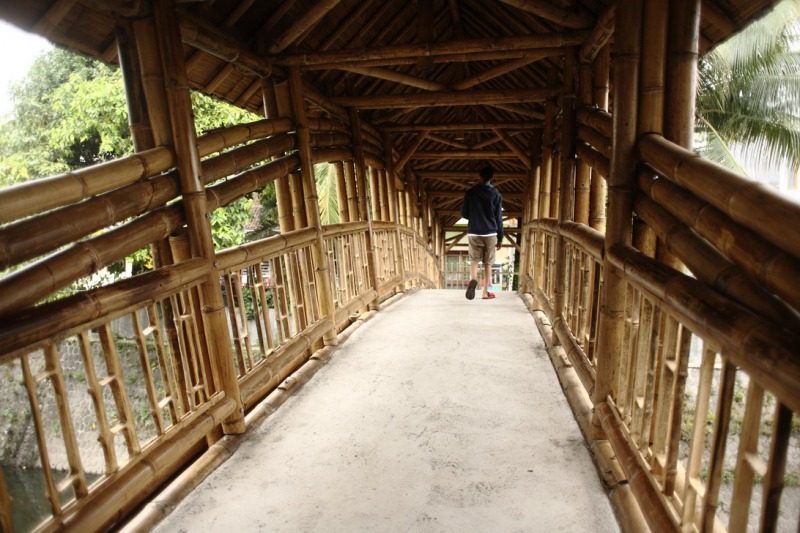#GC2022 is accepting submissions - 25d 27h 05m 44s
As the year 2016 ends the city of Solo (Surakarta) in Central Java gains a new public bridge made of bamboo. The pedestrian bridge is located at Kali Pepe river, spanning 18-meters with track width 1.8-meters in the center and 2.3-meters at ends. The bridge is located between the historical sites of Pasar Gede and Vastenburg Fort. The latter was former Dutch colonial fort where the Bamboo Biennale were held in October. It was the second Biennale in Solo when Indonesian chapter of architects without borders (ASF-ID) invited to design the bridge. The new bamboo bridge has now officially joined Kali Pepe banks remake which aims to rejuvenate river life and culture in Solo.
Solo dubbed itself as “the heart of Java” and witnessed every significant historical and cultural events for the Javanese, an ethnic group which make 60% of population in Indonesia. Bamboo is embedded within Javanese culture and presents in songs, poetry, and folklore. The recent development in Solo represents popular policies including the subsidised city housing, participatory planning, cultural events, and city beautification.
Kali Pepe river separates Pasar Gede to Vastenburg Fort and Keraton Surakarta palace. The bamboo bridge of Kali Pepe is publicly accessed from a parking lot that is recovered from a gas station. Across the bridge lies Kampung Ketandan, an urban community that is sandwiched between strips of warehouses and shops. All within the proximity of Pasar Gede public market. The people of Kampung Ketandan contributes in the construction and management of the bridge through provision of lodging for bamboo artisans-workers and in provision of community volunteers. The community further agrees to guard and care for the bridge that is the first of its kind in Indonesia.
The bridge design and concept were prepared in Bandung by architects of ASF-ID. Scale models were built and tested at the engineering laboratory at Parahyangan Catholic University (UNPAR). For the construction part, experienced bamboo carpenters invited from Yogyakarta. The bridge is billed at IDR 130 millions (approx. EUR 10.000) through public funding made available from Badan Ekonomi Kreatif (BEKRAF). The fund is channeled through Bamboo Biennale. Promoting bamboo as material for the future, the bridge represent both utility and aesthetic aspects of bamboo as city public infrastructure.
Bamboo species of petung (Dendrocalamus asper) is provided by Bambubos of Yogyakarta. The bamboo has been treated with borax solution thus immune to pests. Sufficient roofing is also provided to lengthen bamboo’s lifespan, and bring into permanence. This represents a novel approach in bamboo construction and architecture which in alignment with today’s sustainable development agenda.
The main frames were assembled and joined together at the bank on a parking lot. The main arch consists of large and mature poles that is sliced at regular pattern to obtain intended curviness, then sistered together with galvanise steel bolts. Mobile crane were employed to lift and position the semi-completed bridge onto the foundations. Metal roof and concrete floor were implemented to attain minimum maintenance requirements.

 some rights reserved
some rights reservedSolo is located near to the equator and situated between volvanic montains of Lawu in the east and Merapi in the west. Typically in Java, it enjoys warm humid climate of the tropical. In wet season rainfall can reach to 300 mm in a month. Flooding and stong wind is among risk posed by nature. Bamboo grow in nature throughout Java island. It often found near streams. Bamboo is known for its properties in retaining soli stability adn preserving ground water.

 some rights reserved
some rights reserved